AI tools like ChatGPT are becoming increasingly popular. They can generate human-like text, provide ideas and inspiration, and help with research, among many other things. Therefore, you might be wondering how to create content strategy with ChatGPT.
Fortunately, this tool ⚙️ can help simplify your content marketing in different ways. Once you learn how to compose your prompts, you can utilize ChatGPT’s vast knowledge base to optimize the whole process. Plus, it can help you reduce the time spent on tedious tasks like research.
What you need to know about ChatGPT
ChatGPT is a machine-learning tool that can generate human-like text. It provides results based on user prompts.
For example, if you ask to define “content strategy” in five sentences using simple language, it will return the following:
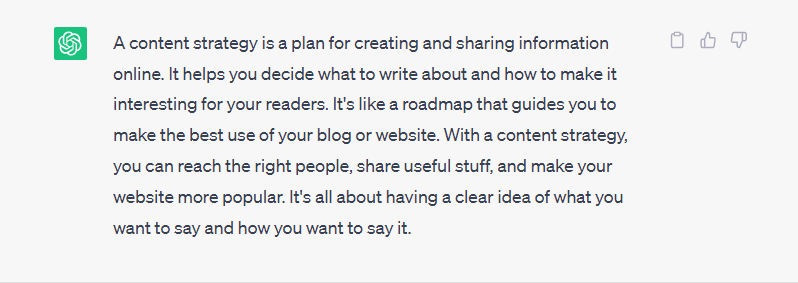
As a content creator or marketer, you can use ChatGPT to explore ideas and even plan your posts. However, the tool has some limitations that you’ll need to be aware of.
For starters, ChatGPT is trained on data that was collected up until 2021. Therefore, if you ask it for information about current or recent trends, you likely won’t get the result you hoped for.
Additionally, ChatGPT does not possess emotional intelligence or personality. This means that the content it generates can seem a little bland or generic, and it might not reflect the tone or voice of your brand.
In fact, our tutorial will show you how to use ChatGPT to brainstorm ideas and templates rather than ask it to generate pieces of content like articles. This way, you can build your content strategy on the suggestions provided by the tool.
How to Create a Content Strategy with ChatGPT (In 4 Steps)
Now that you know a bit more about ChatGPT, you can learn how to utilize it to streamline your workflow and produce content more efficiently.
Here’s how to create content strategy with ChatGPT.
Step 1: Identify your goals 💡
As you might already know, the first step in any content or marketing strategy is to establish your goals. However, sometimes you might not know exactly what you want to achieve.
Fortunately, ChatGPT can help. First, you’ll want to submit a prompt. For example, you can let it know that you’re planning a content strategy for your blog and ask it to list some possible goals:
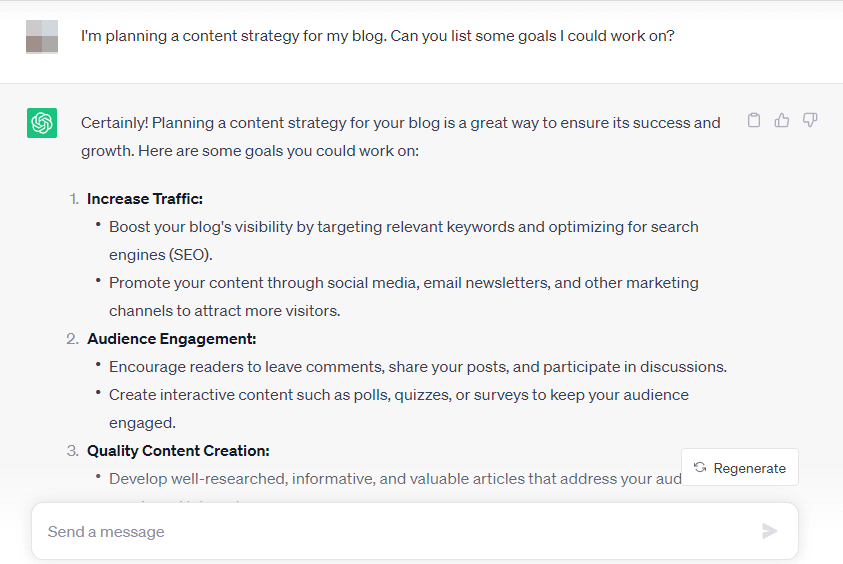
When we tried this, ChatGPT gave us a lot of potential goals to explore, such as:
- Increase traffic by targeting relevant keywords and promoting content on social media
- Boost engagement by encouraging readers to leave comments and creating interactive content like quizzes
- Grow your email list by offering incentives like exclusive content for subscribers
- Make more money from your blog by exploring new monetization strategies, like sponsored posts.
This list serves as a good starting point. You can select one or two goals and elaborate on them. For example, if you decide to focus on increasing traffic, you can set a more specific target. In this case, you might aim to boost organic traffic by 30 percent over 12 months.
Step 2: Define your target audience 🙍
After establishing your goals, you’ll need to define your target audience. This step is very important, as it will help ensure that your content is created for the right people.
Of course, ChatGPT cannot tell you who your followers are. However, it can provide an audience profile template to help you identify them. You just need to ask it for one:
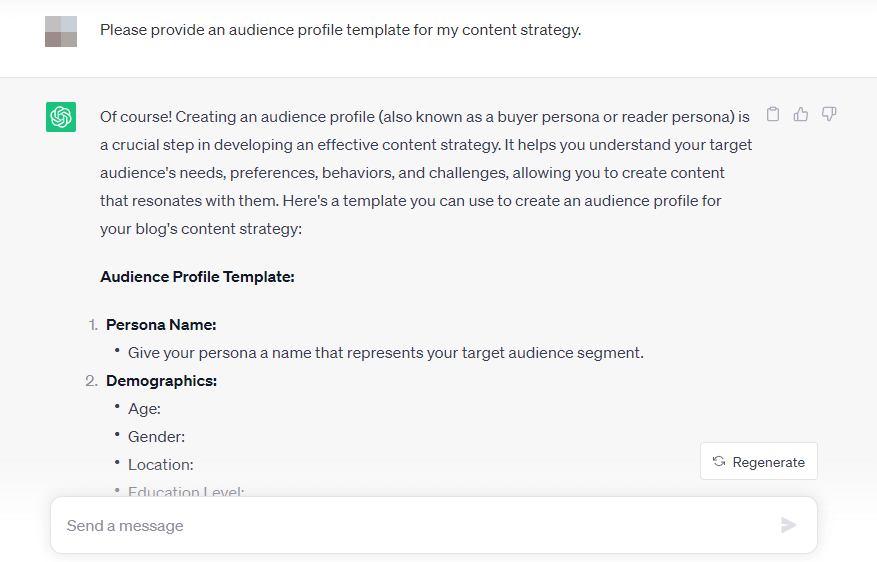
ChatGPT has given us a comprehensive template that covers things like demographics, pain points, interests, online behavior, and a lot more:
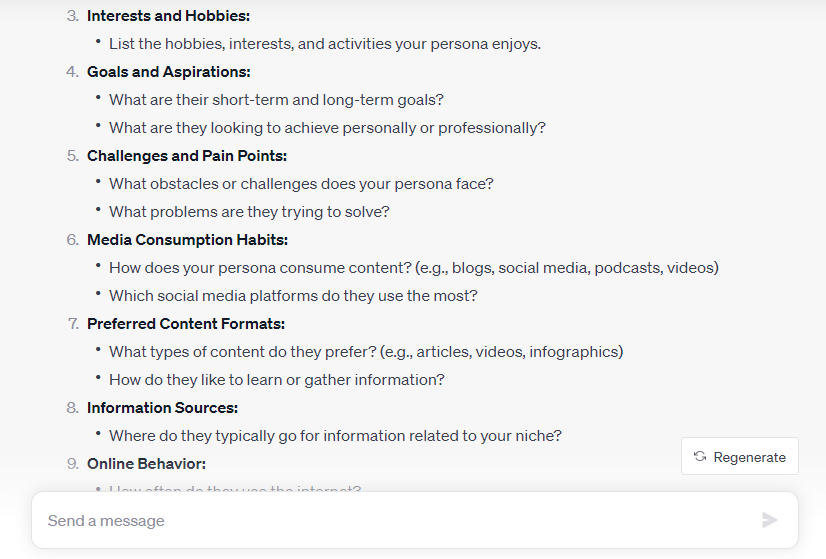
You don’t need to fill out the entire template. You can simply select the sections that apply to you and adjust the template as needed.
Step 3: Generate topic ideas and clusters ⌛
The next step in how to create content strategy with ChatGPT is to generate topic ideas. The tool can be particularly useful here, as it can provide lots of suggestions based on your prompt.
For instance, we asked ChatGPT to give us some topic ideas for a digital marketing blog:
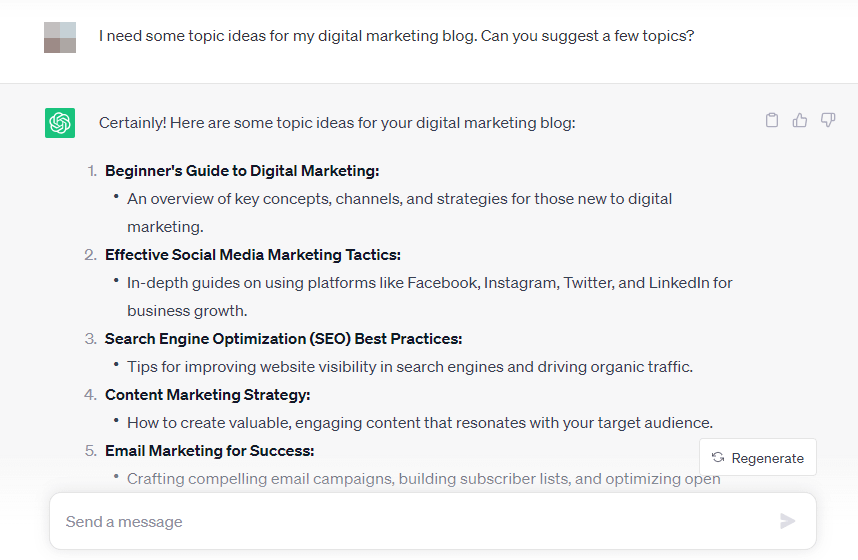
You can compose a more specific prompt to get more relevant results. For example, we asked ChatGPT for topics that target full-time bloggers who want to increase their affiliate marketing revenue, and it gave us the following:
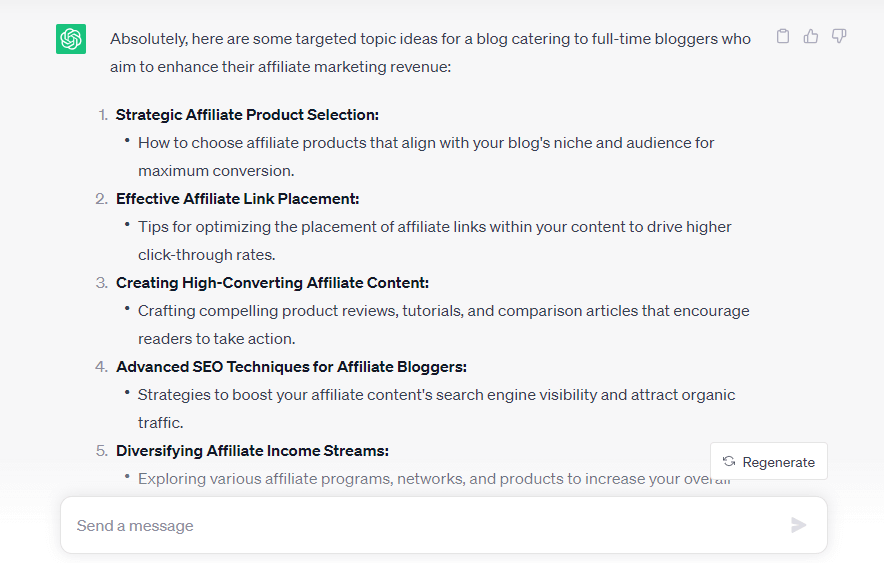
As you can see, we specified our target audience in the prompt, and ChatGPT provided topics that cater to that reader.
You can also use ChatGPT to create topic clusters. These are ideas that are grouped together under a relevant topic or subtopic.
For example, we asked ChatGPT to create topic clusters for a blog on digital marketing, and it created sections such as Search Engine Optimization, Content Marketing, and Social Media Marketing:
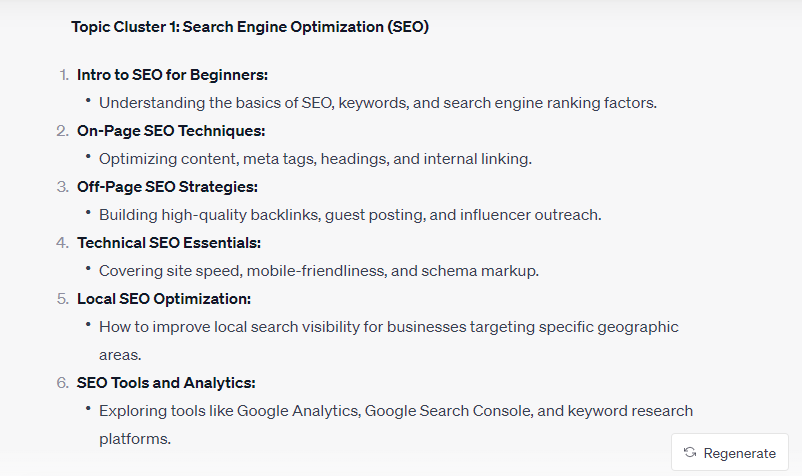
For each cluster, it provided a list of subtopics to cover, plus a few topic ideas for each subtopic:
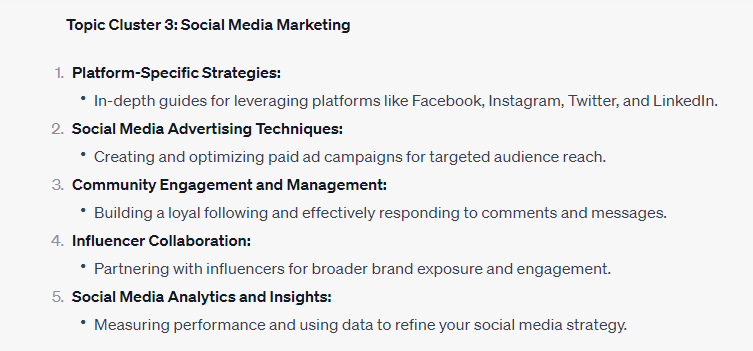
You’ll want to make a copy of any topics that you want to use in your content strategy. This will come in handy when working on the next and final step.
Step 4: Explore relevant keywords 👨💻
Now that you have a list of topics, you can explore some relevant keywords. Once again, ChatGPT can be very helpful here.
For example, let’s say we want to write a post on “Advanced SEO Techniques for Affiliate Bloggers.” We can ask ChatGPT to provide some keywords on this topic:
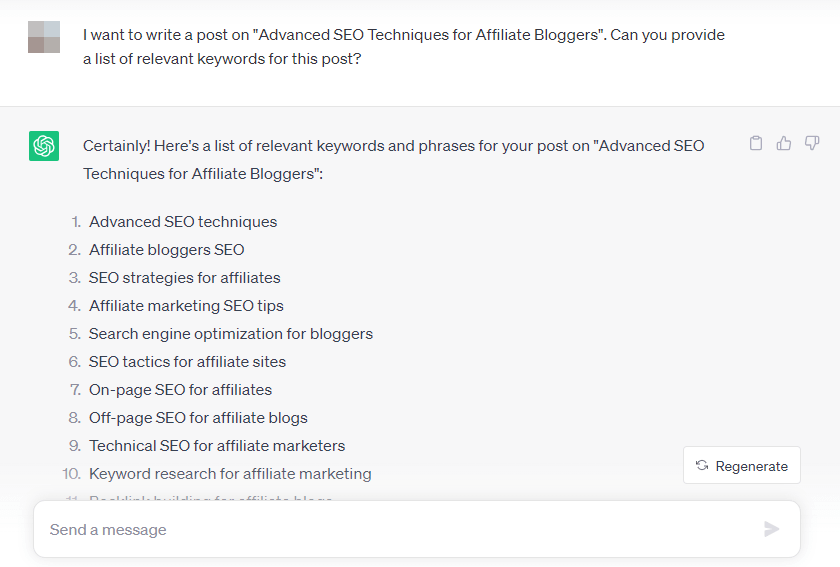
In this case, the tool gave us a list of 30 suggestions. The only problem is that ChatGPT is unable to provide real-time data on these keywords, like monthly searches and levels of competition.
Therefore, you’ll need to use a tool like Google Keyword Planner to test these keywords and identify the best search terms for your content strategy:
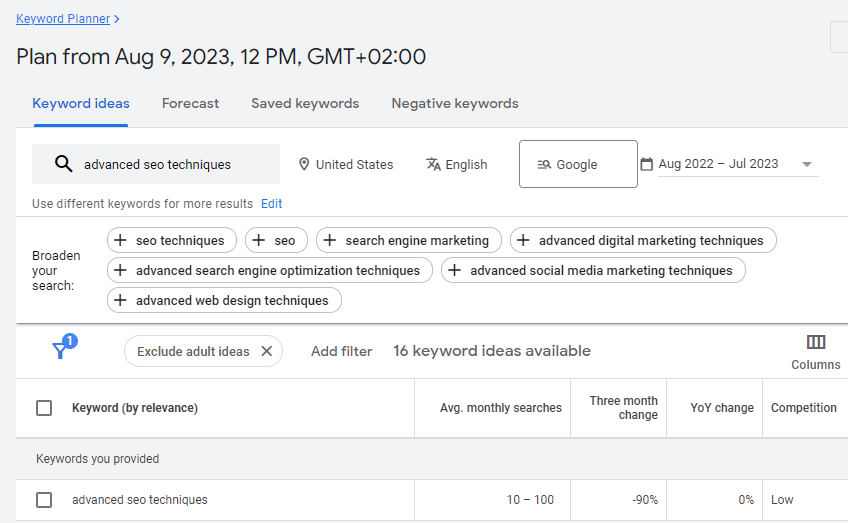
Ideally, you’ll want to target long-tail keywords with a decent monthly search volume and low competition. You can then incorporate these phrases into your content using an SEO plugin, like Yoast or Rank Math.
Conclusion 🧐
ChatGPT can be a very useful tool for content creators and marketers. It can help you brainstorm ideas and provide templates as a starting point. The only downside is that it’s unable to provide recent or real-time data.
👉 To recap, here’s how to create content strategy with ChatGPT:
- 💡 Identify your goals.
- 🙍 Define your target audience.
- ⌛ Generate topic ideas and clusters.
- 👨💻 Explore relevant keywords.
Do you have any questions about how to create content strategy with ChatGPT? Let us know in the comments section below!